It’s 6:27 a.m. My rental car sways and bounces over a bumpy dirt road bordered by fig trees. The air outside is crisp and cold, offering no hint of the heat that will hit by midday. The early morning sun rays add golden spotlights on the trees while simultaneously creating long, dark shadows. It’s the perfect backdrop to learn about figs.
I’ve arrived at Maywood Farms, 115 miles north of Sacramento in the small town of Corning. With 172 and a half acres of the fruit, they’re the only certified organic fig growers in the area. The car’s wheels crunch over rocks as the dirt road turns into a gravel parking lot, and on the adjacent grassy lot, I notice several rows of wooden pallets covered with figs, basking in the morning sunlight. Workers pour buckets of freshly picked fruit onto bare wooden platforms, adding to the beautiful display.

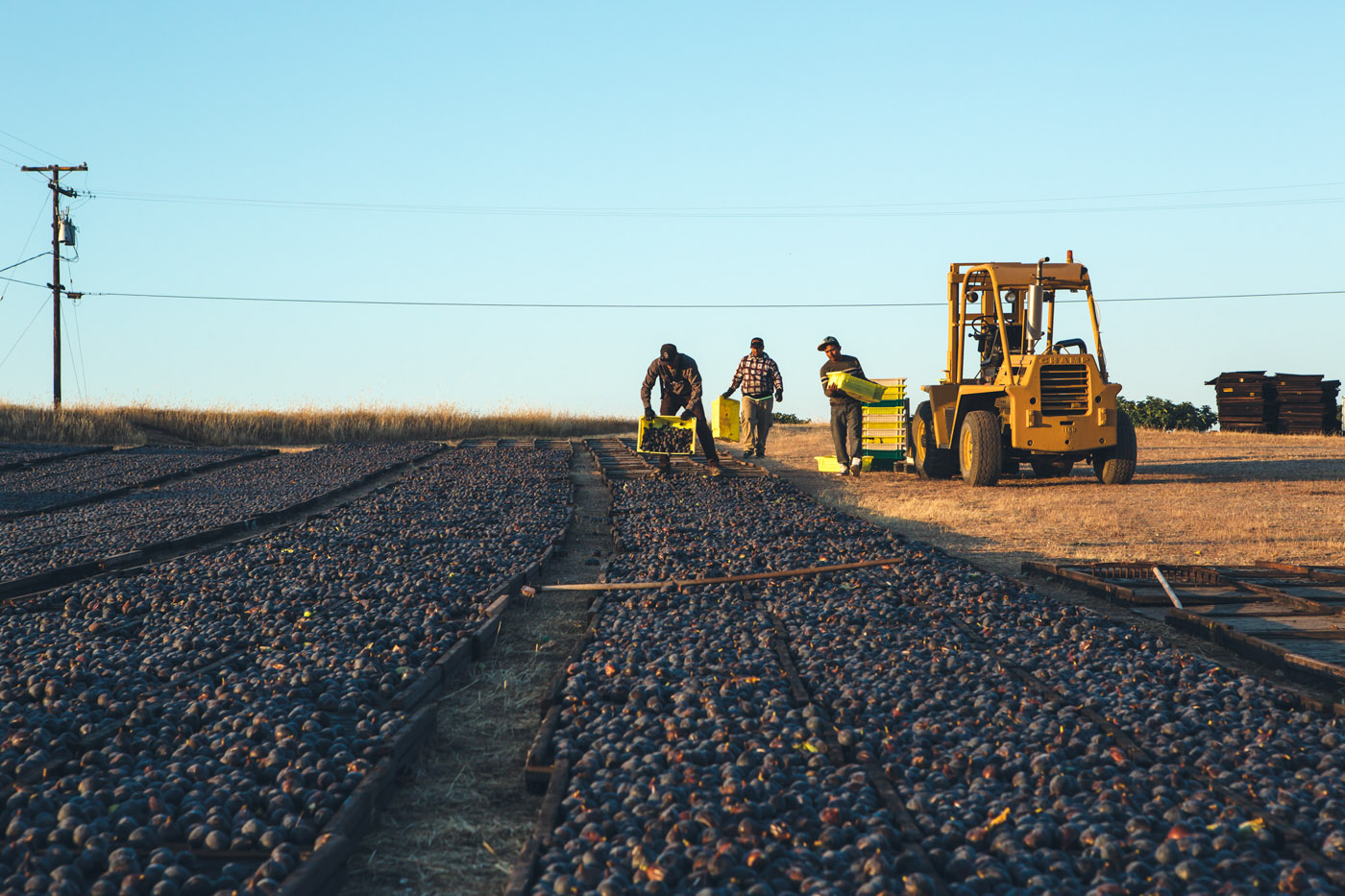
I’m here to meet Bob Steinacher, owner of Maywood Farms. After we exchange pleasantries and a handshake, Steinacher takes me to a section of his fig trees, sharing his story and greeting workers along the way. Along with his wife and kids, Steinacher operates the farm with a contagious passion.
But Steinacher doesn’t come from a traditional farming background. Growing up in the Santa Clara Valley, his family had an acre of apricots––a passion project of Steinacher’s father. “In the evenings when he’d get home from work, he would go out and putter around, pruning the trees. We’d pick the ‘cots then go to the dry yard and cut [them] for dried apricots. We sold boxes of ‘cots to people to make jams,” says Steinacher, before delving deeper into his family background. “I’ve always loved growing things. My grandfather, whom I never met, was in Germany and had a steel fabrication company. He went onto the roof and built a garden, which was really strange back then in the 20s. So maybe that’s where I got that urge to grow things,” Steinacher says with a chuckle.
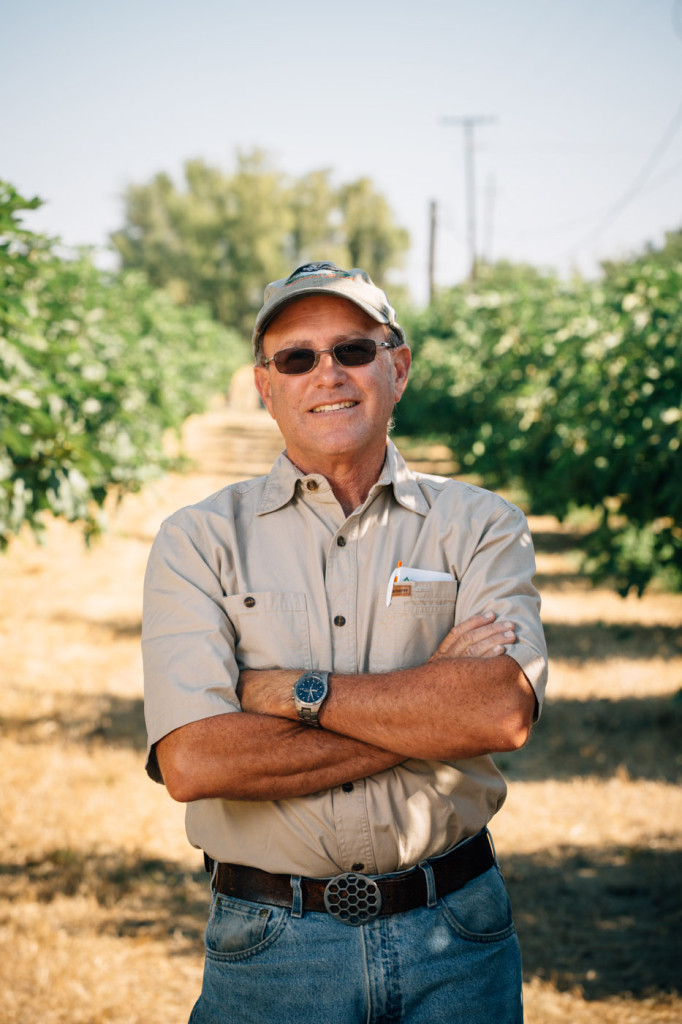
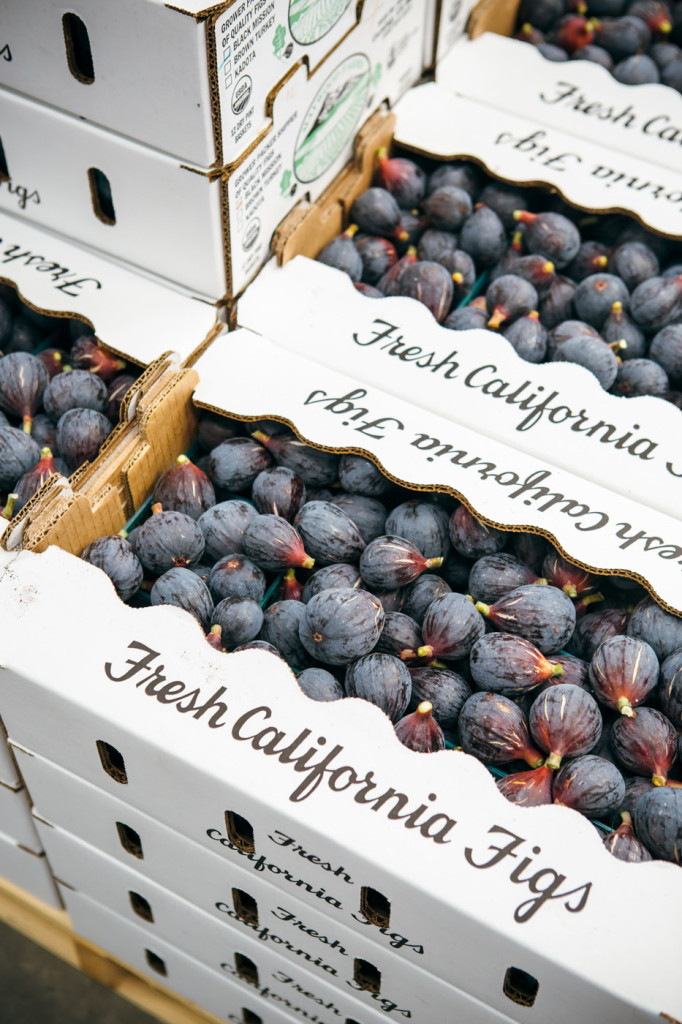
Steinacher bought the land his farm currently sits on in 1981. Backed by his family and a partner in his uncle’s law firm, Steinacher purchased the land despite sky high prices and interest rates. “I couldn’t afford really good ground and ended up with poor soils. The front area of my farm is Class 2/Class 3 soil and the area to back is Class 4/Class 5––[meaning] it’s very shallow,” say Steinacher. “Figs seem to do really, really well [here]––they don’t need really good soils, and I think that adds to the quality of our fruit, as far as the high sugar content. The figs struggle a little more, and when they struggle, they tend to produce sweeter fruit.”
As we stroll through the morning lights and shadows, we stop in front of a fig tree. Two workers in thick gloves with white baskets labeled, “Maywood,” are parting leaves and squeezing figs, deciding whether to take or leave the fruit. “Every fig has to be felt and hand picked. Even though they may have good color, they have to have the right give to be the proper ripeness,” explains Steinacher.
The sun has creeped up higher in the sky, now fully bathing rows of fig trees in golden light. Along the way, we stop at various sections of the farm, each a different variety of figs. Some of Steinacher’s trees aren’t proliferous, but the figs they produce are high quality and very flavorful. Several types of figs are grown on Maywood Farms: black mission, brown turkey and kadota are the main varietals. Steinacher offers me a delicious sampling of each fig, which I take without any reservations. He carefully splits the figs in half, showing off the juicy interiors. Each has its own distinct flavor and sweetness, all making for a delectable impromptu breakfast.
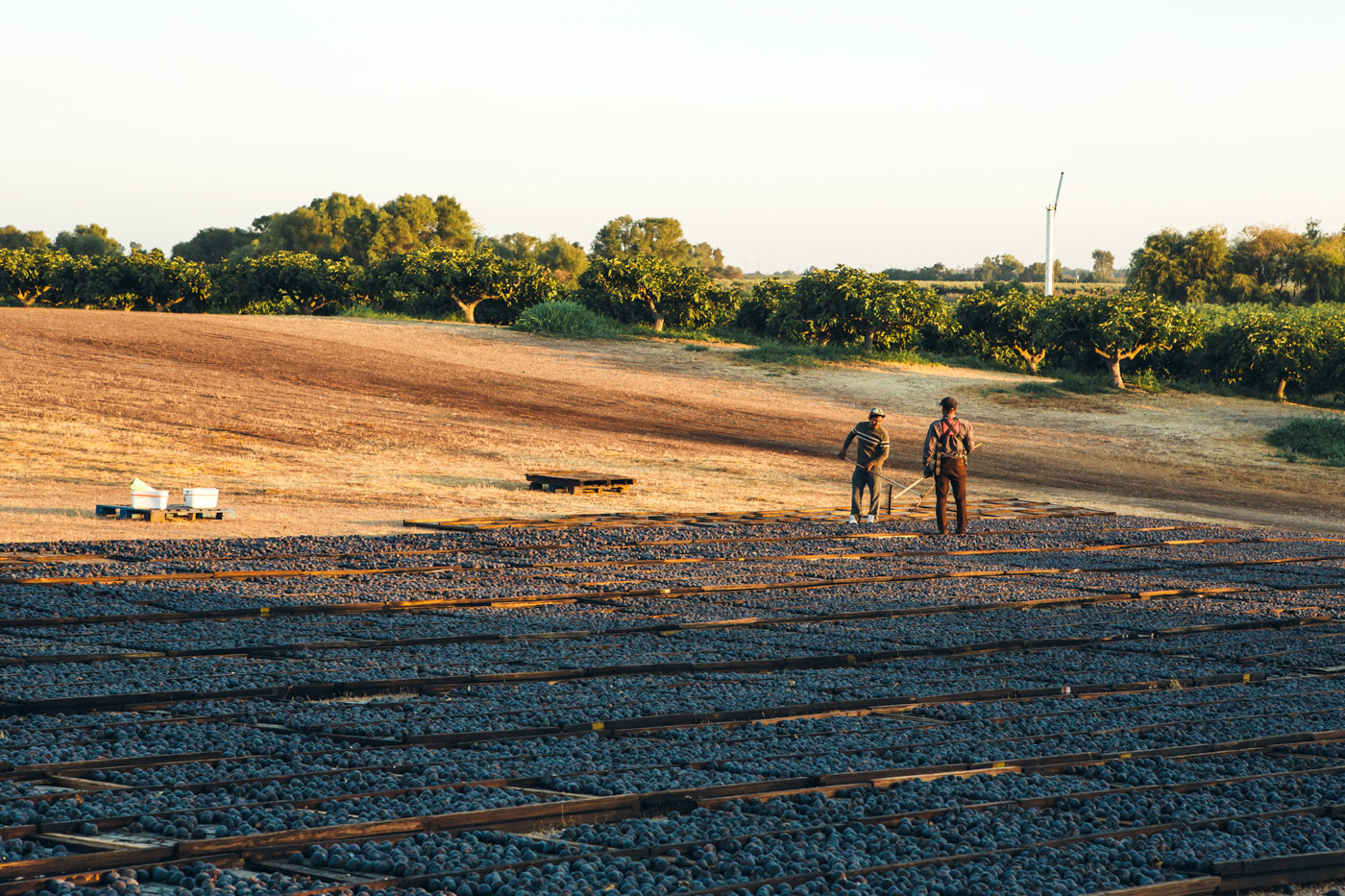

“We pick our figs when they’re a bit firmer than what we’ve been eating today, which is very ripe and the best tasting,” says Steinacher. With my mouth full of fig, I can only nod in agreement. “We have to have some shelf life. Between trucking them across the country––which means four to five days on a refrigerated truck––plus the couple of days they might be in our cooler, fresh figs have about a two week shelf life if you maintain that cold chain. If you break that cold chain and the figs sweat, they’re going to get moldy very quickly, even if you cool them back down. They’re like berries that way,” explains Steinacher. Maywood Farms packs and ships figs all over the country, with the biggest demand in cities with higher populations. “One-third of our figs stay on the west coast, from Seattle to L.A.,” Steinacher says. “I would love to sell all my figs locally, but the demand isn’t here as it is in the big cities. The restaurants aren’t here as well––very few would use figs on the menu.”
We reach a vista point on our tour, giving us a picturesque view of Maywood Farms. Once again, Steinacher pulls over for a fig break, saving the best for last. The Adriatic––grown in limited quantities––is a super popular varietal amongst fig connoisseurs. With a short shelf life, it’s hard to find these figs at their peak ripeness and most superb flavor due to their fragility. Available for only a couple of months out of the year, the Adriatic fig has amassed an almost cult-like following. After feeling a few pieces of fruit, Steinacher gently breaks off a beautifully plump fig, chartreuse with subtle green striations. He splits the thin skin and I’m surprised by the vibrant red inside. “Look at this beauty,” Steinacher says with a smile. “Some people say it tastes like raspberry jam.” I eagerly take a generous bite of the perfectly ripe fig. The sweetness of the fruit hits my palate and I notice the berry notes immediately. I have just found my favorite fig.
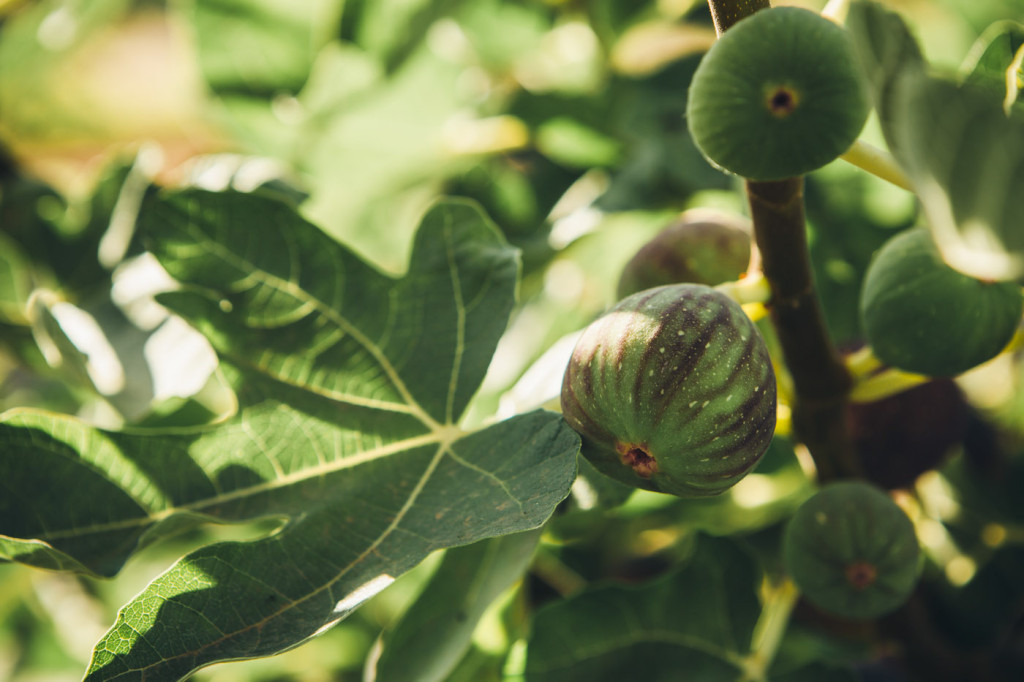
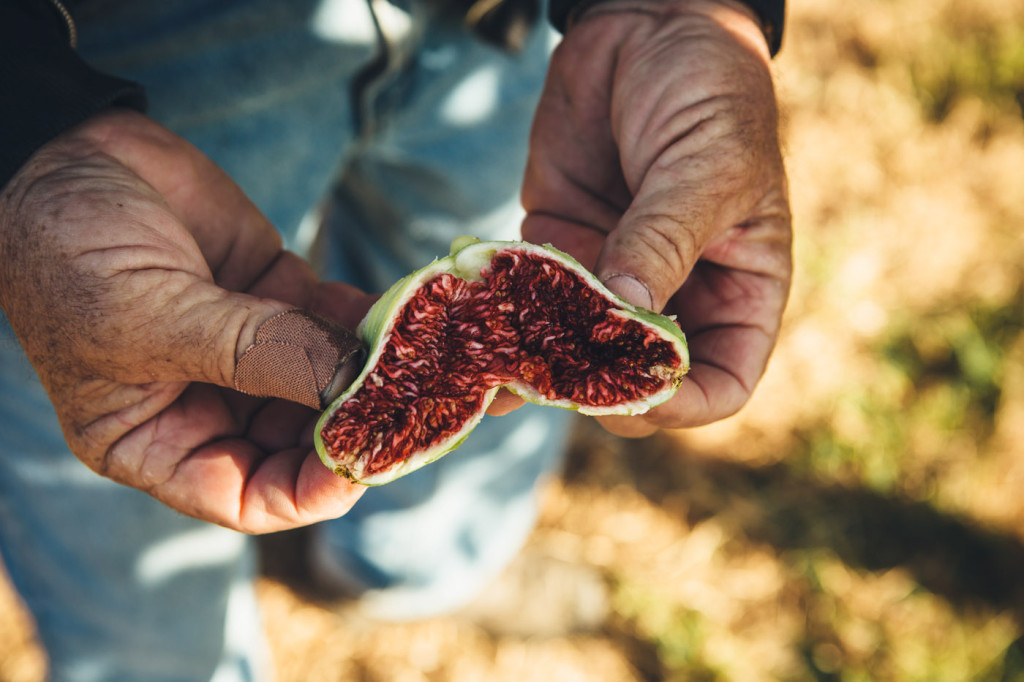
“When you pick figs a bit early, before they’re very ripe, the sugar level isn’t as high. They will soften but they’ll never get more sugar,” Steinacher tells me. “They’re not like a peach that’ll actually sweeten up as it ripens up. We pick them at a firm stage but they still have good sugar.”
We begin to make our way back to the main building. I’m still nibbling on the Adriatic, trying to make it last for the duration of the ride. Steinacher takes me to the sorting area inside where workers are busy checking figs and packing boxes. Here, all figs are inspected for any splitting (caused by cooler temps in the morning) or scarring (a result of wind which causes the fruit to ripen too quickly). “There’s nothing wrong with a split fig,” says Steinacher while showing me an example. “Some people see splitting and think the fruit has gone bad. People who know about figs know that a good fig is really soft; that splitting means it’s ripe. I wish we could educate all consumers about this.” Despite Steinacher’s wishes, split figs don’t sell. Instead of being packed, the figs with splitting or scarring are taken outside to the pallets I noticed when first arriving. These figs are laid out in the sun and rotated frequently; once dried, they’re sent off to make fig paste used in organic cookies.
Maywood Farms currently has 30 customers––a base of long-standing relationships who have been with Steinacher for many years. “They want our quality and their customers demand our quality. My customers start calling me before the season even starts, because their customers are asking for them,” laughs Steinacher. “We have a really good, loyal customer base.”
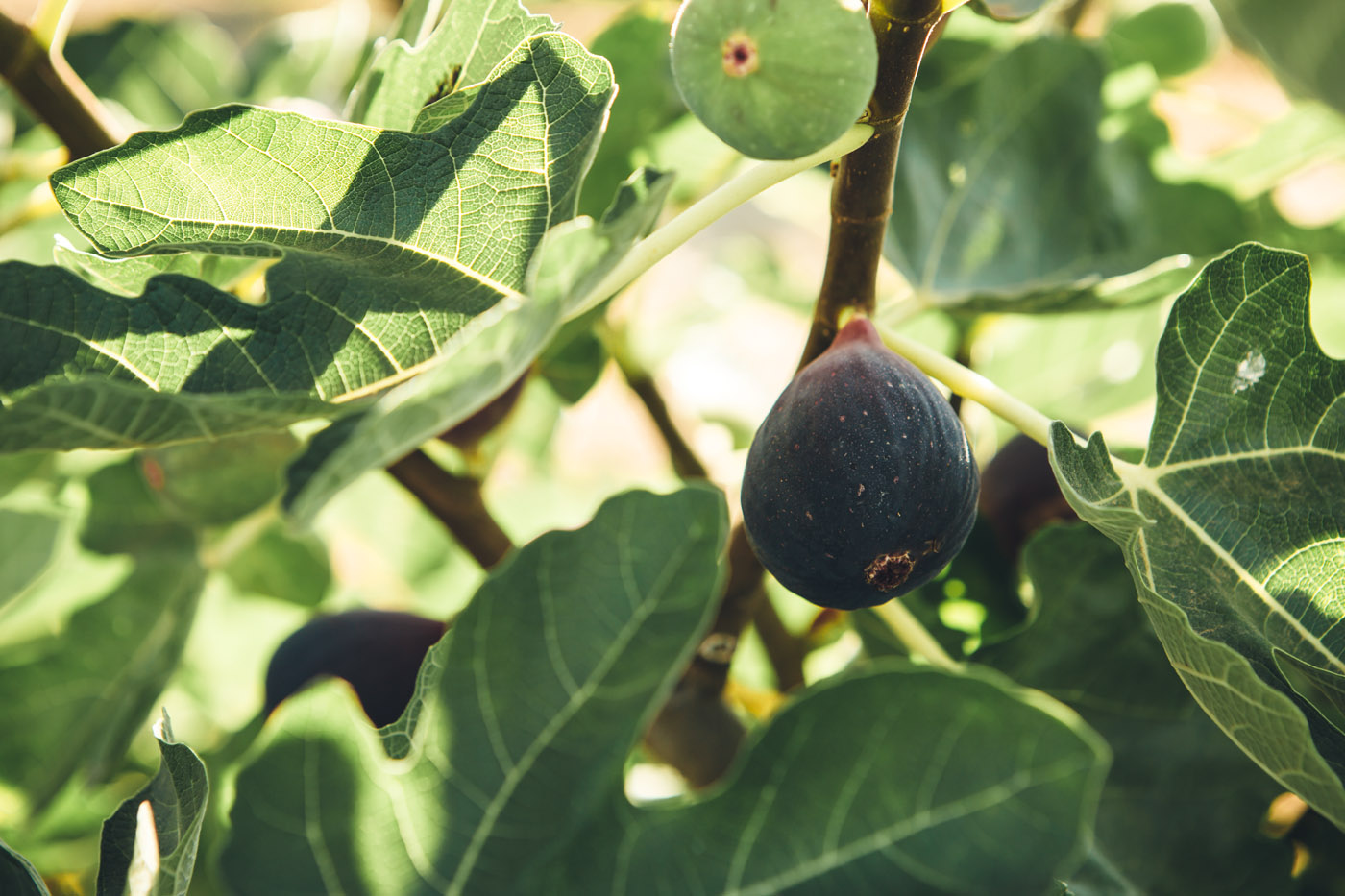
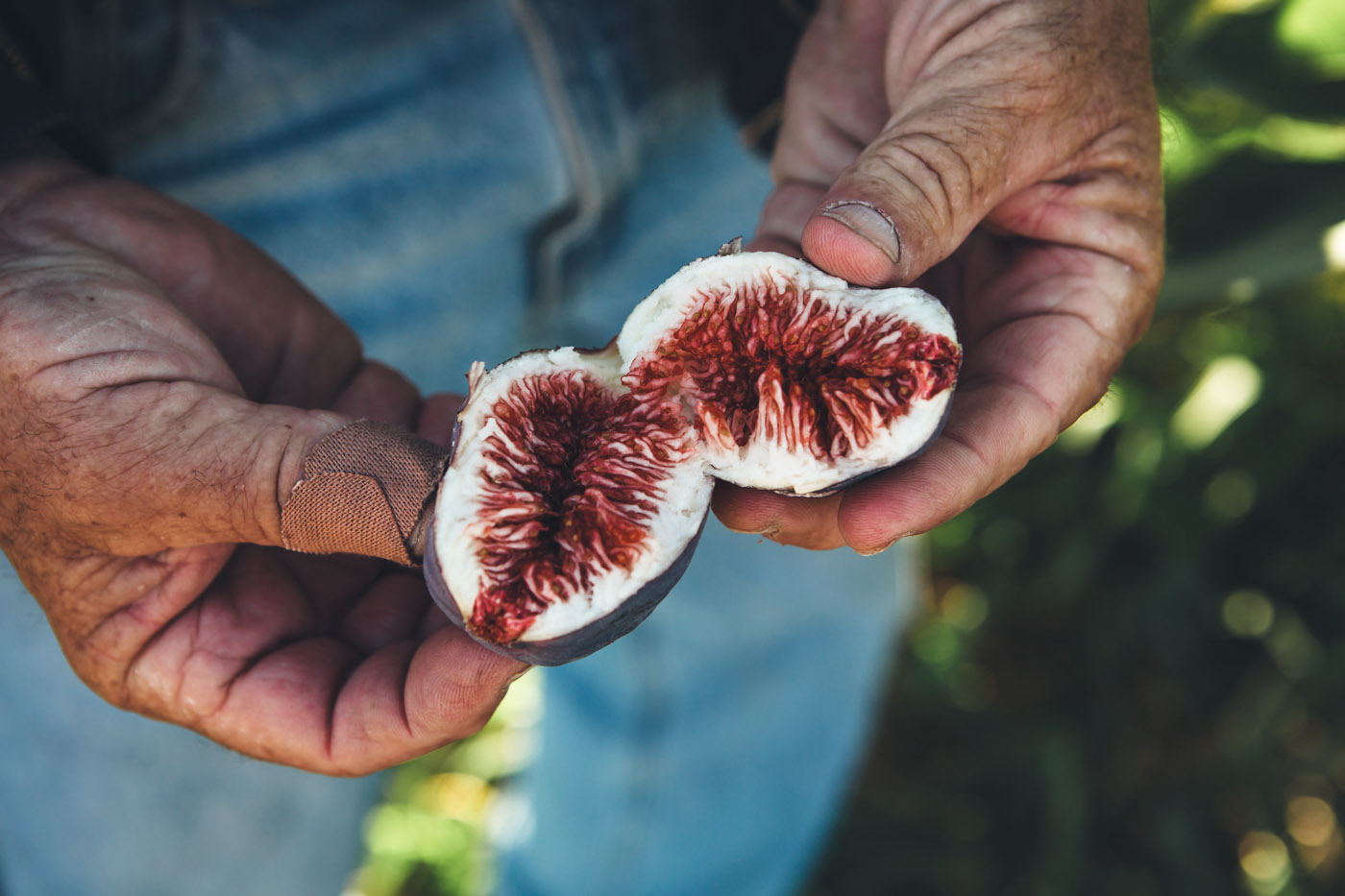
Watching Steinacher interact with his workers, speaking in both English and Spanish, it’s easy to see the respect he has for his employees. Maywood Farms currently has 70 workers; that number will peak at 100 once production is fully ramped up with many workers coming back year after year. “We start at $11 an hour, and the people that return get raises every year,” Steinacher says. “Depending on our profit for the year, we generally give bonuses as well at the end of the season.”
But there is a growing issue affecting the fig harvest. “Our biggest problem right now is finding enough farm workers. There are less and less workers available because of restrictions at the border,” says Steinacher. “The population of workers that are here is getting older and retiring. It’s a hard job and nobody wants to do it.”
Unlike almond or olive trees, you can’t machine-harvest figs because the fruit is constantly ripening on the trees. “You couldn’t build a robot that would be able to feel the fig and tell when it’s at the right stage to be picked. Workers have to touch every fig out there on the trees,” says Steinacher.
“They need to come up with an immigration policy that allows people to come in and work, then go home for a period of time. Nearly 100 percent of my workers are from Mexico or Central America, and they’re all good people––they’re hard workers, they want to do a good job, they have good family values and they contribute to our tax base,” Steinacher says. “My parents were immigrants. Our society was built on the backs of immigrants––coming in and moving up, their kids becoming citizens who contribute to the welfare of this country. This immigration issue is really crazy.”

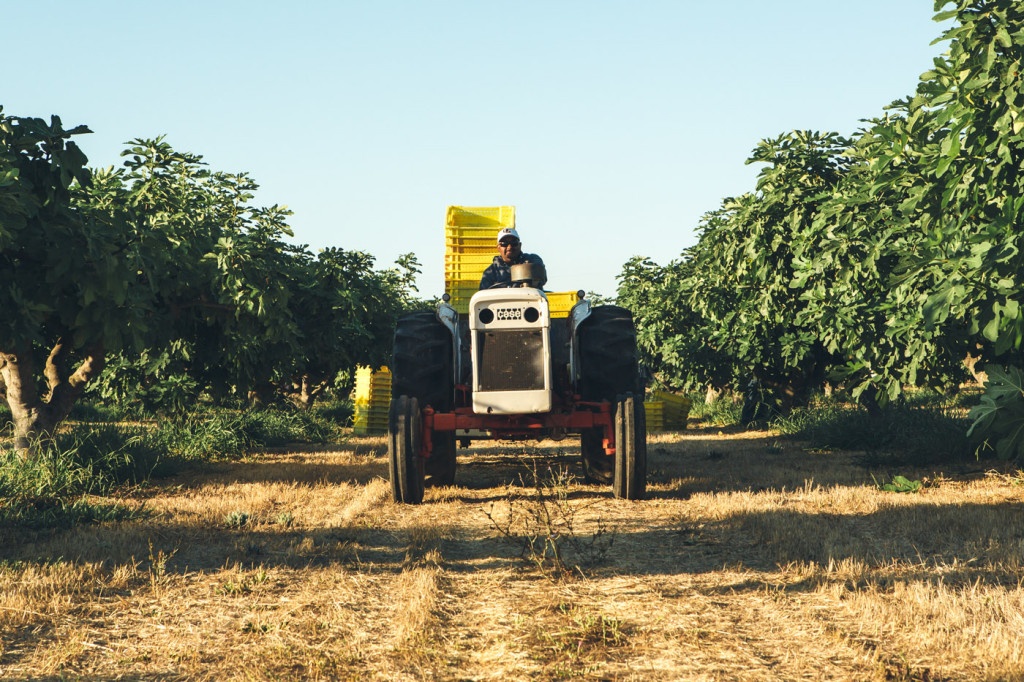

When it comes to our food, the problem goes beyond just immigration; there is a lack of knowledge that runs deep in our society. “People don’t understand where their food comes from and how it gets to their store. People need to understand the food in their supermarkets was produced by people, mostly picked by people and that it takes a lot of work and dedication to produce a quality product, to make sure it’s packed properly and brought to the store in a timely manner in order to have good quality,” Steinacher emphasizes. “If we’re not able to do it in the United States, it’s going to be produced in a country where there aren’t the rules, regulations and the controls that we have––and we won’t know what’s been put in and on the products.”
As I’m getting ready to leave, Bob Steinacher hands me a boxful of assorted figs, a generous parting gift I can’t wait to share with my family. I can see––and taste––the pride and love that goes into these figs. It feels good knowing there are people out there like Bob Steinacher, his family and his team of workers––who care so deeply about what they produce, and in turn, what we eat.
—
Maywood Farms
3635 Mount Shasta Ave
Corning, CA 96021





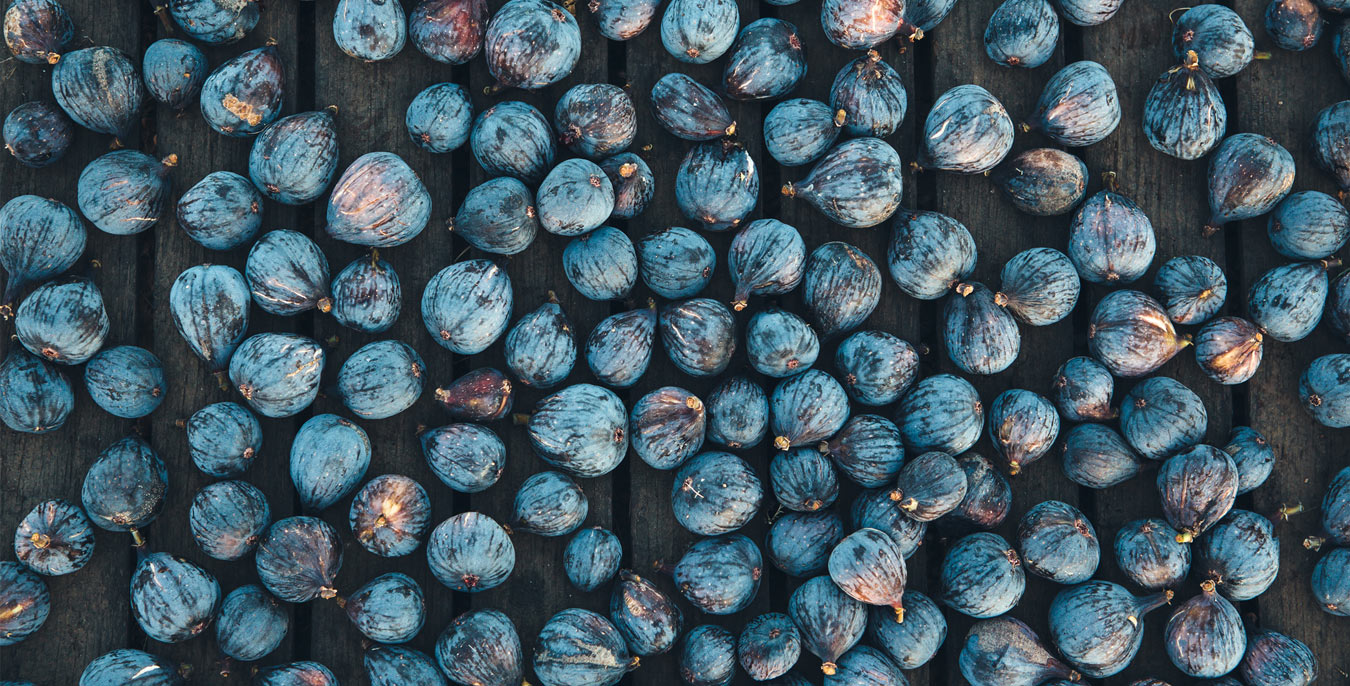

Our comments section is for members only.
Join today to gain exclusive access.